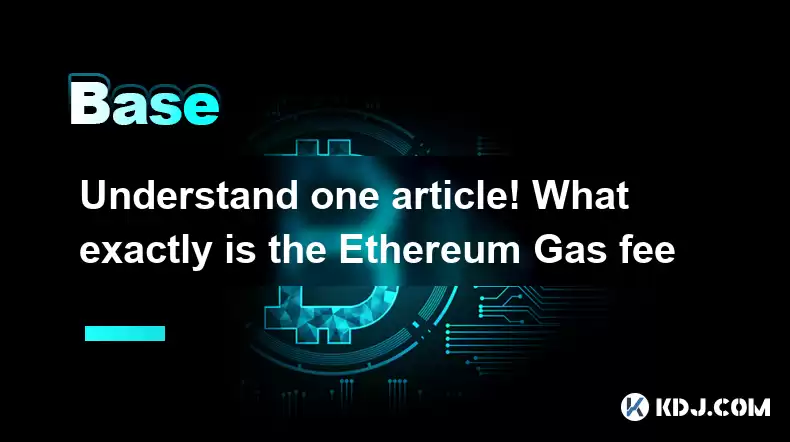-
 Bitcoin
Bitcoin $113400
-0.78% -
 Ethereum
Ethereum $3572
-2.11% -
 XRP
XRP $2.908
-4.07% -
 Tether USDt
Tether USDt $0.9999
0.00% -
 BNB
BNB $751.0
-1.27% -
 Solana
Solana $162.3
-3.12% -
 USDC
USDC $0.9998
-0.01% -
 TRON
TRON $0.3319
-0.54% -
 Dogecoin
Dogecoin $0.1963
-4.68% -
 Cardano
Cardano $0.7128
-4.47% -
 Hyperliquid
Hyperliquid $37.14
-2.57% -
 Stellar
Stellar $0.3858
-4.90% -
 Sui
Sui $3.341
-3.86% -
 Bitcoin Cash
Bitcoin Cash $554.6
-1.94% -
 Chainlink
Chainlink $16.10
-3.77% -
 Hedera
Hedera $0.2338
-4.24% -
 Ethena USDe
Ethena USDe $1.001
0.00% -
 Avalanche
Avalanche $21.66
-4.72% -
 Litecoin
Litecoin $117.8
-2.92% -
 UNUS SED LEO
UNUS SED LEO $9.002
0.08% -
 Toncoin
Toncoin $3.156
-6.13% -
 Shiba Inu
Shiba Inu $0.00001192
-3.09% -
 Uniswap
Uniswap $9.411
-3.25% -
 Polkadot
Polkadot $3.562
-2.50% -
 Dai
Dai $0.9999
0.00% -
 Monero
Monero $288.9
-4.05% -
 Bitget Token
Bitget Token $4.274
-1.88% -
 Cronos
Cronos $0.1362
-1.79% -
 Pepe
Pepe $0.0...09999
-4.55% -
 Aave
Aave $252.7
-2.97%
Understand one article! What exactly is the Ethereum Gas fee
以太坊 Gas 费是用户在区块链上交易或执行智能合约时支付的费用,用于补偿矿工的计算资源,Gas 费由 Gas Limit 和 Gas Price 决定。
Apr 10, 2025 at 03:21 am

以太坊 Gas 费是指在以太坊区块链上进行交易或执行智能合约时所需支付的费用,用于补偿矿工验证和打包交易所消耗的计算资源。以下是对其详细介绍:
Gas 的概念
Gas 可以被视为以太坊网络中的“燃料”。以太坊被视为一个去中心化的计算网络,当用户发送 Token、执行合约、转移以太币或进行其他操作时,计算机需要进行计算并消耗网络资源。就像汽车行驶需要汽油一样,用户必须支付 Gas 费来购买“燃料”,以便让计算机为其工作,最终 Gas 费作为手续费支付给矿工。
Gas 相关的重要概念
- Gas Price:即 Gas 的单价,以 Gwei 为单位,1 Gwei 等于 0.000000001 以太坊。用户设置的 Gas Price 越高,矿工就越有动力将其交易打包,交易被确认的速度也就越快;反之,若 Gas Price 设置得过低,交易可能需要等待较长时间才能被处理。以太坊默认的 Gas Price 是 1 wei。
- Gas Limit:有两个层面的含义。一是针对单个交易,指交易发起者愿意为该交易支付的最多 Gas 数量,交易发起者需要在发起交易时设置好;二是针对区块的 Gas Limit,即一个单独的区块所能容纳的 Gas 总量是有限制的。如果实际消耗的 Gas 小于设置的 Gas Limit,矿工只会收取实际消耗的部分,剩余的 Gas 会返还给用户;如果实际消耗的 Gas 超过了 Gas Limit,交易将无法执行完成,并会回滚到执行之前的状态,此时矿工会收取 Gas Price 与 Gas Limit 的乘积作为费用。
Gas 费的计算与作用
- 计算方式:Gas 费由 Gas Limit 和 Gas Price 相乘得到。完成一笔交易所需的 Gas 单位数量取决于交易的复杂程度,例如简单的转账交易通常需要 21000 Gas,而涉及智能合约的复杂操作则需要更多的 Gas。
- 作用:一方面,Gas 费能够激励矿工维护以太坊网络的安全,促使他们积极地验证和打包交易。另一方面,它也有助于防止网络资源被滥用,因为用户需要为自己的操作支付相应的费用,从而避免了大量无意义的交易对网络造成拥堵。
Disclaimer:info@kdj.com
The information provided is not trading advice. kdj.com does not assume any responsibility for any investments made based on the information provided in this article. Cryptocurrencies are highly volatile and it is highly recommended that you invest with caution after thorough research!
If you believe that the content used on this website infringes your copyright, please contact us immediately (info@kdj.com) and we will delete it promptly.
- Coinbase, Financing, and the Crypto Market: Navigating Choppy Waters in NYC Style
- 2025-08-06 12:50:11
- Bitcoin in Indonesia: Crypto Education and Economic Strategy
- 2025-08-06 12:50:11
- DeriW Mainnet: Zero Gas Fees Revolutionize On-Chain Derivatives Trading
- 2025-08-06 10:30:11
- IOTA, Cloud Mining, and Eco-Friendly Crypto: A New York Investor's Take
- 2025-08-06 10:30:11
- Kaspa (KAS) Price Prediction: August 6 - Will It Break Free?
- 2025-08-06 10:50:12
- Pension Funds, Bitcoin ETFs, and Exposure: A New Era of Institutional Crypto Adoption
- 2025-08-06 12:55:12
Related knowledge

What is the difference between CeFi and DeFi?
Jul 22,2025 at 12:28am
Understanding CeFi and DeFiIn the world of cryptocurrency, CeFi (Centralized Finance) and DeFi (Decentralized Finance) represent two distinct financia...

How to qualify for potential crypto airdrops?
Jul 23,2025 at 06:49am
Understanding What Crypto Airdrops AreCrypto airdrops refer to the distribution of free tokens or coins to a large number of wallet addresses, often u...

What is a crypto "airdrop farmer"?
Jul 24,2025 at 10:22pm
Understanding the Role of a Crypto 'Airdrop Farmer'A crypto 'airdrop farmer' refers to an individual who actively participates in cryptocurrency airdr...

What is the difference between a sidechain and a Layer 2?
Jul 20,2025 at 11:35pm
Understanding the Concept of SidechainsA sidechain is a separate blockchain that runs parallel to the main blockchain, typically the mainnet of a cryp...

What is the Inter-Blockchain Communication Protocol (IBC)?
Jul 19,2025 at 10:43am
Understanding the Inter-Blockchain Communication Protocol (IBC)The Inter-Blockchain Communication Protocol (IBC) is a cross-chain communication protoc...

How does sharding improve scalability?
Jul 20,2025 at 01:21am
Understanding Sharding in BlockchainSharding is a database partitioning technique that is increasingly being adopted in blockchain technology to enhan...

What is the difference between CeFi and DeFi?
Jul 22,2025 at 12:28am
Understanding CeFi and DeFiIn the world of cryptocurrency, CeFi (Centralized Finance) and DeFi (Decentralized Finance) represent two distinct financia...

How to qualify for potential crypto airdrops?
Jul 23,2025 at 06:49am
Understanding What Crypto Airdrops AreCrypto airdrops refer to the distribution of free tokens or coins to a large number of wallet addresses, often u...

What is a crypto "airdrop farmer"?
Jul 24,2025 at 10:22pm
Understanding the Role of a Crypto 'Airdrop Farmer'A crypto 'airdrop farmer' refers to an individual who actively participates in cryptocurrency airdr...

What is the difference between a sidechain and a Layer 2?
Jul 20,2025 at 11:35pm
Understanding the Concept of SidechainsA sidechain is a separate blockchain that runs parallel to the main blockchain, typically the mainnet of a cryp...

What is the Inter-Blockchain Communication Protocol (IBC)?
Jul 19,2025 at 10:43am
Understanding the Inter-Blockchain Communication Protocol (IBC)The Inter-Blockchain Communication Protocol (IBC) is a cross-chain communication protoc...

How does sharding improve scalability?
Jul 20,2025 at 01:21am
Understanding Sharding in BlockchainSharding is a database partitioning technique that is increasingly being adopted in blockchain technology to enhan...
See all articles

























































































